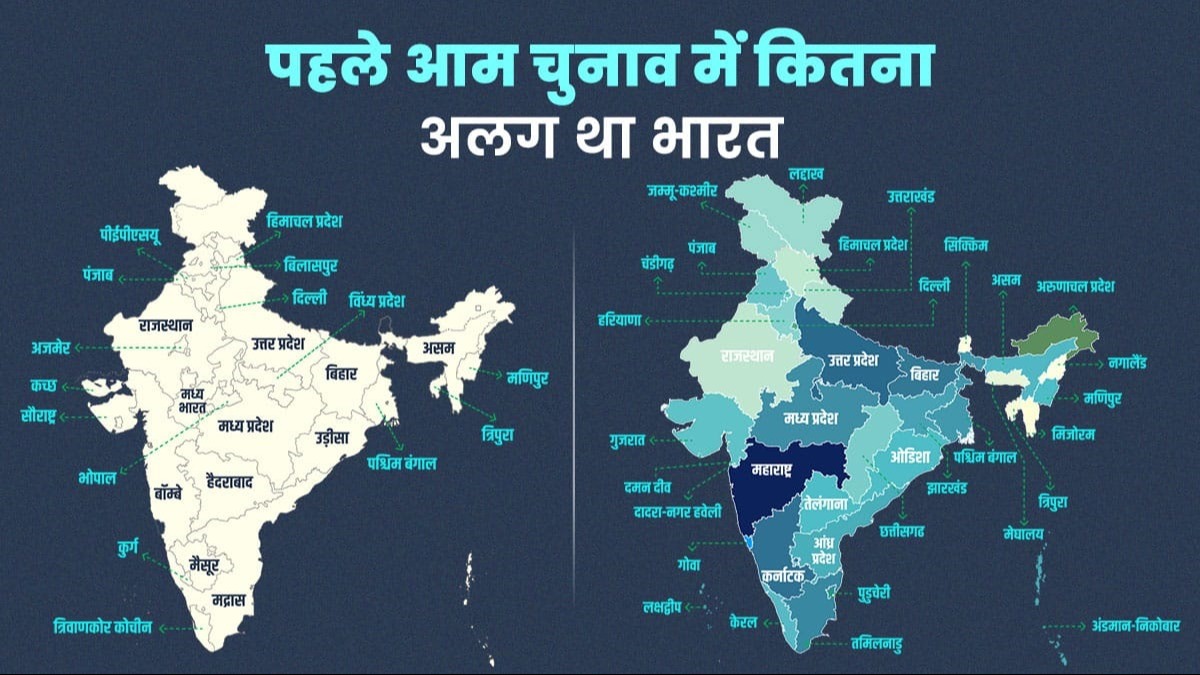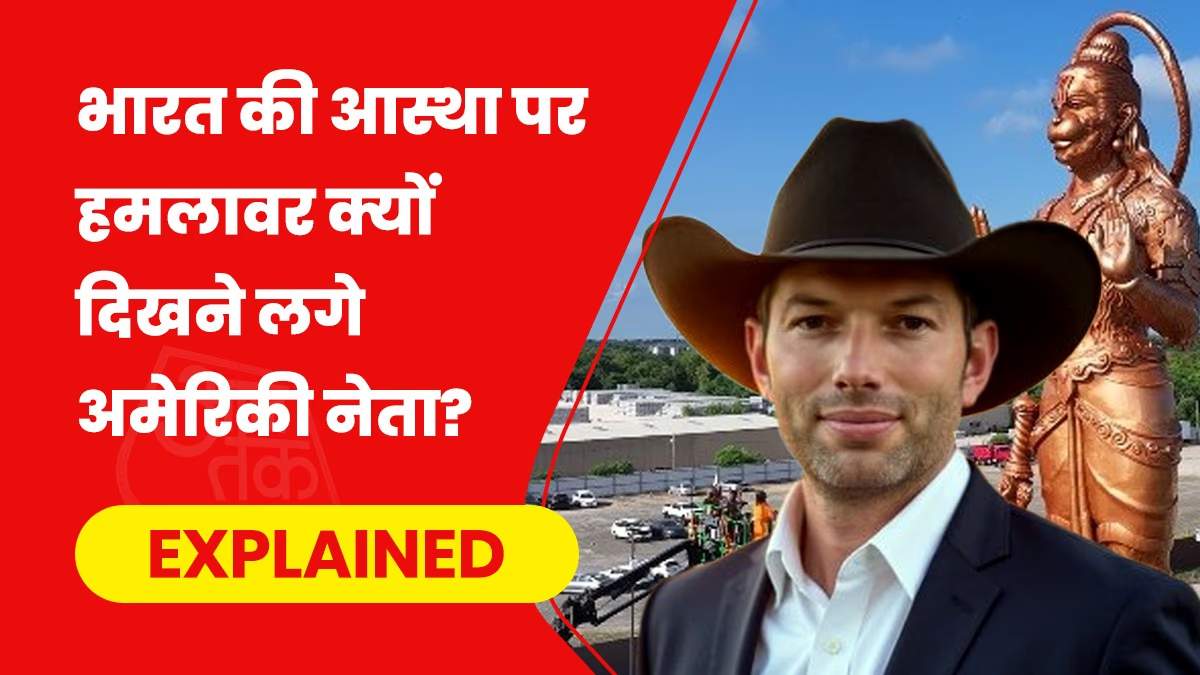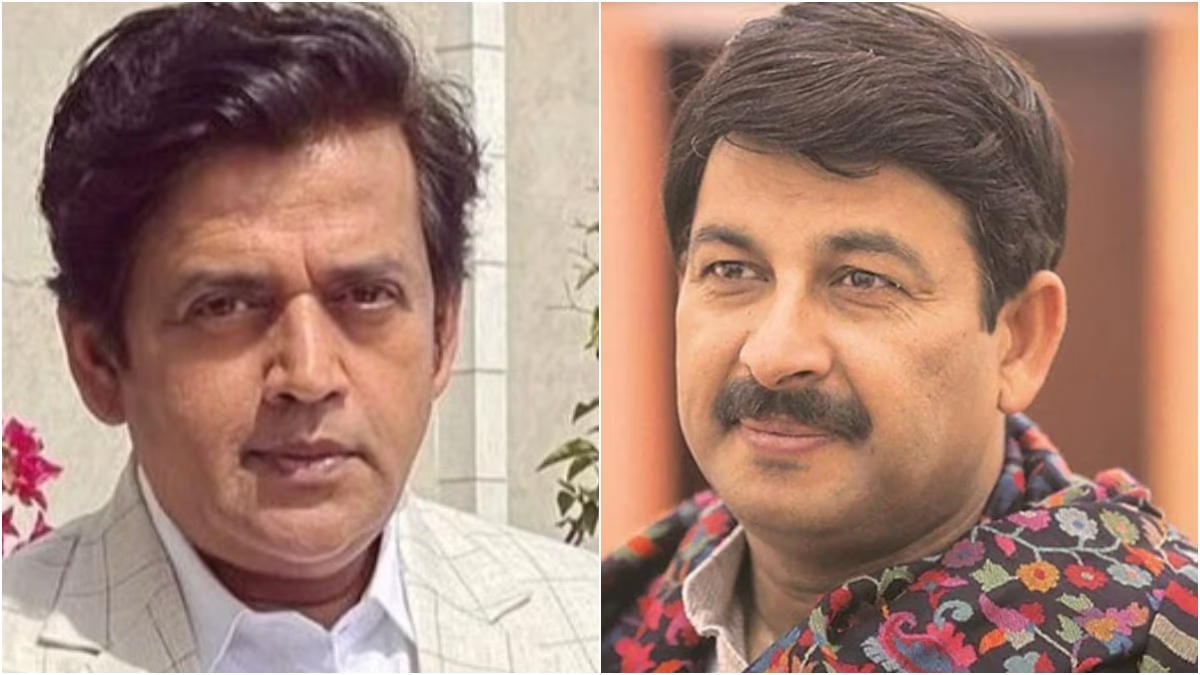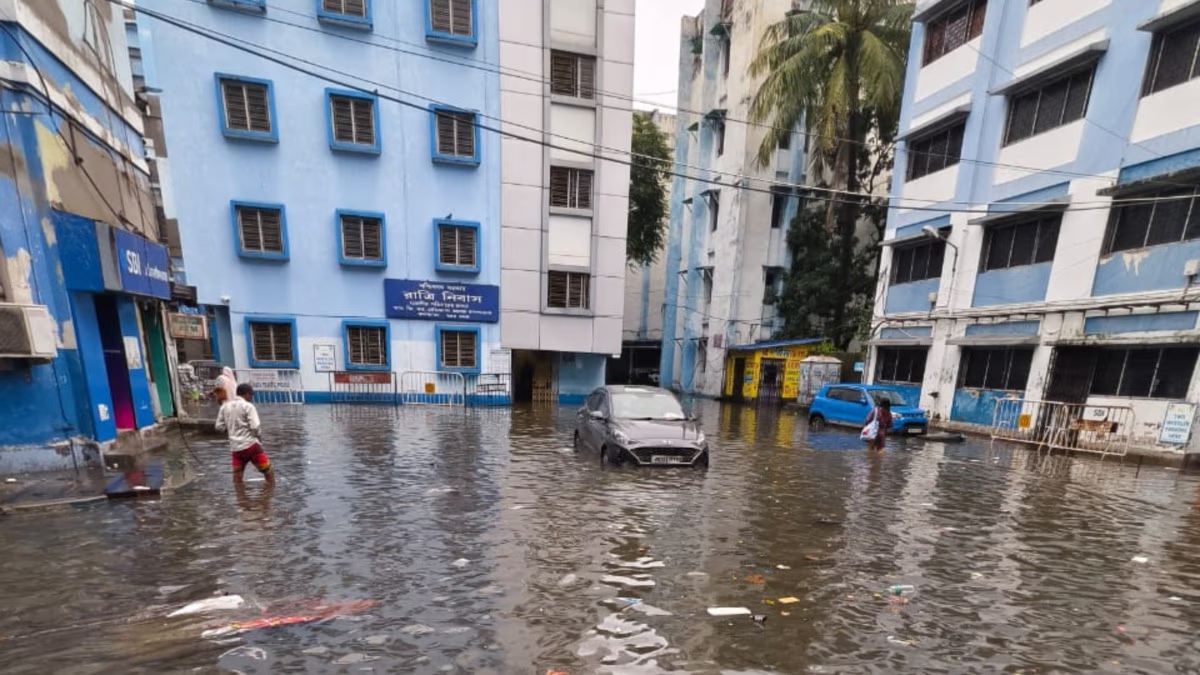Seventy-three years have elapsed since India's first general elections, and now we are witnessing the 18th Lok Sabha elections. During this period, India's political map has gone through profound changes. It might surprise you that places like Bhopal, Bombay, Ajmer, and Madras used to be states. With time, these states have been redefined, and they now exist with different identities.
New states have risen on India's political map, old states have become smaller, new Lok Sabha seats have been created, and the existence of many old seats has been phased out.
Even the election process has evolved. After independence, some elections resulted in two representatives from a single Lok Sabha seat. However, through a process of reforms and changes, India's democracy now sends only one MP from each seat to Parliament. Let's explore the changes that have reshaped India's political landscape from the first election till now.
Vindhya Pradesh and Bhopal
Centrally located Vindhya Pradesh had four Lok Sabha constituencies but five seats, as a combined area of Chhatarpur, Datia, and Tikamgarh represented two seats. Additionally, Rewa, Satna, and Shahdol were other constituencies.
At that time, Bhopal was a separate state with the constituencies of Raisen and Sehore. Today, both are part of the Vidisha Lok Sabha constituency.

Source: aajtak
Central India and Madhya Pradesh
Central India, Madhya Pradesh, Bhopal, and Vindhya Pradesh – of these, two do not exist today. After the 1951 elections, Central India and Vindhya Pradesh were combined into Madhya Pradesh, which was later dissected to form a new state, now known as Chhattisgarh. During the first general election, Central India had nine constituencies, including Indore, Gwalior, Morena Bhind, Guna, and Ujjain. The majority of present-day Chhattisgarh was then part of Madhya Pradesh.
Bombay, Now Divided into Gujarat and Maharashtra
Bombay was a state that included many current constituencies of Gujarat and Maharashtra like Surat, Baroda, Pune, Jalgaon, Solapur, Ratnagiri, and Bombay City (Mumbai). A total of 37 Lok Sabha seats were in Bombay State, which hadn't been divided into Gujarat and Maharashtra yet.
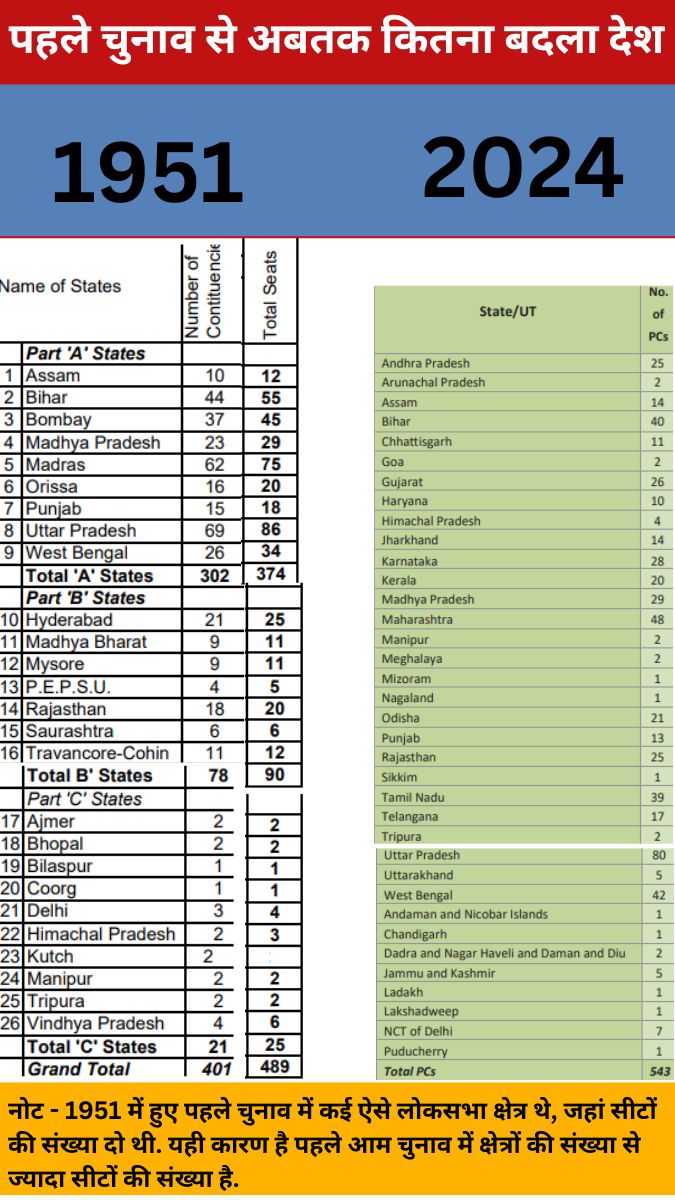
Source: aajtak
PEPSU, Punjab, and Himachal Pradesh
PEPSU, or Patiala and East Punjab States Union, had four Lok Sabha seats, including Sangrur, Patiala, Kapurthala Bathinda, and Mahendragarh. In contrast, the 1951 Punjab included 15 constituencies, with areas now part of Haryana and Himachal Pradesh. Himachal Pradesh existed even then but only had two constituencies, Mandi Mahasu and Chamba Sirmour.
Saurashtra and Ajmer
There was another state named Saurashtra, constituted from parts of present-day Rajasthan and Gujarat, with six constituencies including Jhalawar, Gohilwad, Central Saurashtra, and Saurastra. Additionally, Ajmer was a small state within current Rajasthan with two Lok Sabha seats, Ajmer South and North.
Hyderabad, Mysore, Madras, and Travancore-Cochin
In the South, there were four states, including Hyderabad, Mysore, Madras, and Travancore-Cochin. Hyderabad comprised 21 constituencies with 25 seats, as four constituencies hosted two seats each. Mysore had 9 constituencies and 11 seats, while Madras had a massive 62 constituencies with 75 seats. Travancore-Cochin also consisted of 11 constituencies and 12 seats. Thus, the current states of Kerala, Andhra Pradesh, Tamil Nadu, Karnataka, and Telangana were not in existence then.
The Era of Dual Representatives for a Single Seat
Presently, each seat elects one MP. However, in the 1951-52 elections, some constituencies elected two representatives. This rule was maintained for the first two elections. During the 1951-52 election, a total of 89 seats elected two MPs, with one from the general category and another from the scheduled caste.
In the subsequent 1957 elections, there were 91 such dual seats. This was intended to provide representation for socially weaker sections. During this period, a voter had the right to cast two votes. This practice was discontinued from the third Lok Sabha elections onwards.
